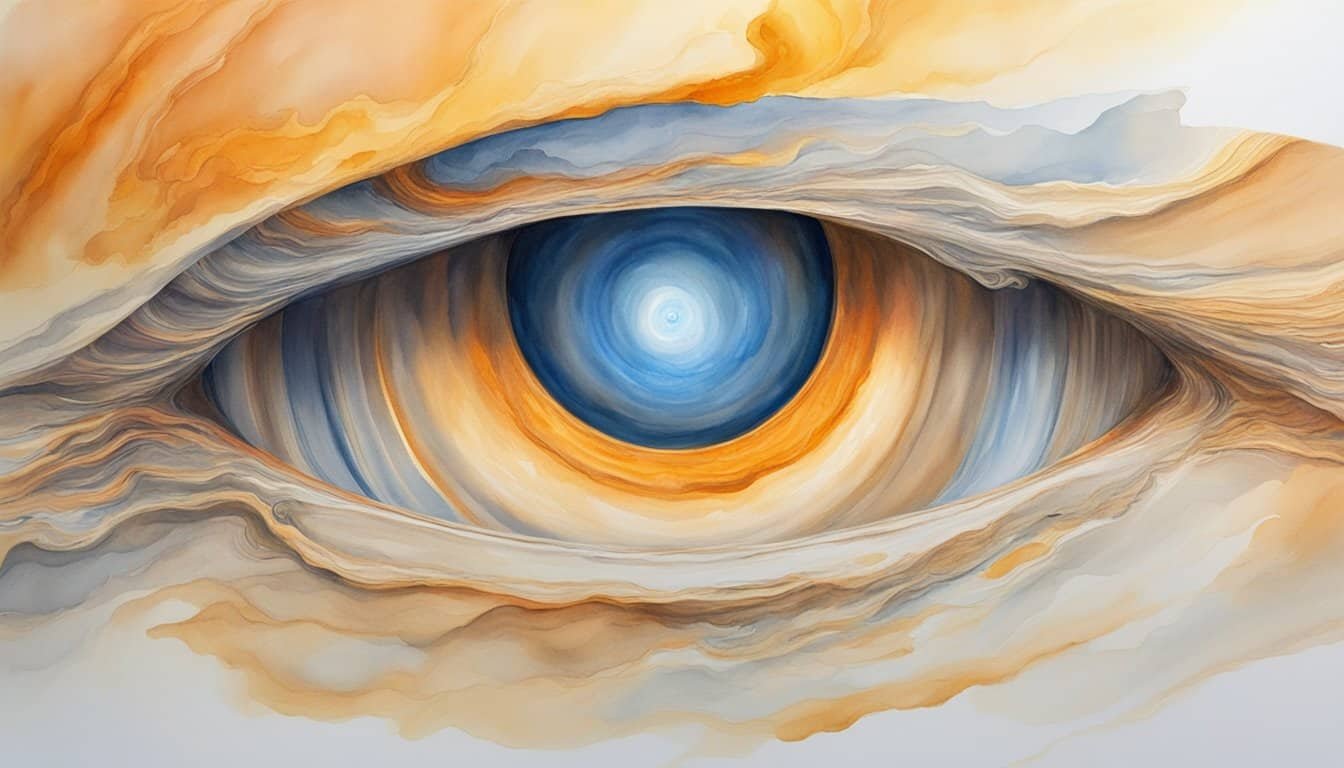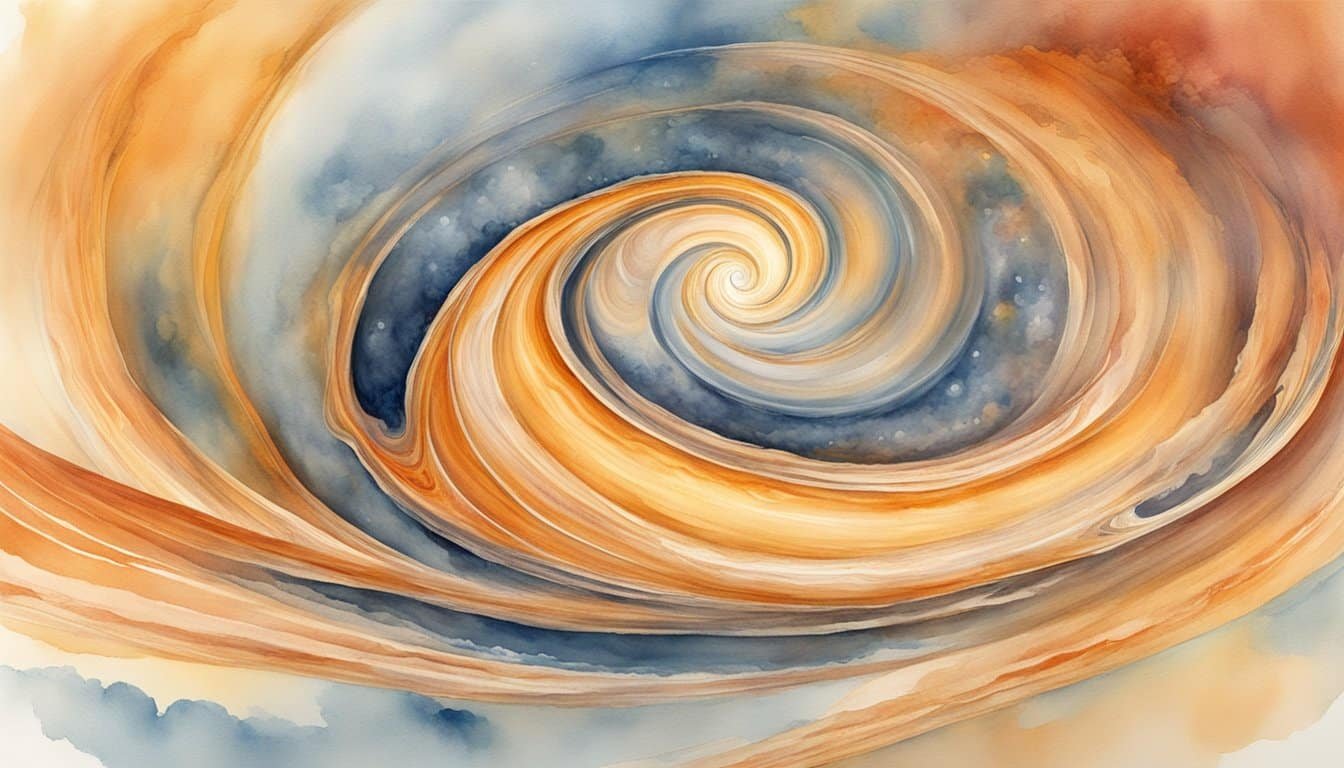Overview of Jupiter’s Great Red Spot
Jupiter’s Great Red Spot is a massive storm, persisting for at least 400 years. Known for its distinctive reddish hue and swirling atmospheric bands, this storm is a prominent feature of the planet’s observable appearance.
Origins and History
The Great Red Spot (GRS) is believed to have been a fixture in Jupiter’s atmosphere since at least the 17th century, although precise observations began in the 1800s. This enduring storm system has been continuously observed by astronomers since it was first identified, with the earliest substantiated records tracing back to 1831 and less certain sightings stretching as far back as 1665. Over time, scientists have scrutinized the evolution of the GRS, noting changes in both its size and intensity.
Physical Characteristics
This immense Jovian vortex measures about 16,350 kilometers in width as of the latest measurements, which is almost 1.3 times the Earth’s diameter. The storm’s swirling winds can reach speeds of about 432 km/h. The GRS’s reddish color may be due to the compounds phosphorus or sulfur, but its precise nature remains somewhat mysterious. This remarkable storm is not only a feature of interest due to its longevity but also because it allows scientists to study the dynamics of Jupiter’s atmosphere.
Scientific Exploration and Studies

Jupiter’s Great Red Spot has captivated astronomers and the general public alike with its swirling mystery. As a perpetual storm larger than Earth itself, it offers an unparalleled window into the atmospheric dynamics of the largest planet in our solar system.
Observations and Findings
Researchers have employed telescopes both terrestrial and orbital to observe and study Jupiter’s Great Red Spot. These observations yield insights into the storm’s structure and behavior over time. For example, studies using the Hubble Space Telescope and other ground-based telescopes have tracked changes in the storm’s size, shape, color, and drift rate.
Telescopes Utilized:
- Hubble Space Telescope
- Ground-based telescopes
Key Findings:
- Variation in storm size and color
- Shifts in drift rate
Role of NASA and Spacecraft
NASA has been at the forefront, with spacecraft such as Voyager 1 and more recently, Juno, playing pivotal roles in unveiling the mysteries of the Great Red Spot. Juno, in particular, is providing a closer look at the storm through direct flybys, improving our understanding of both its gravity field and its depth. Such missions underscore the agency’s commitment to expanding human knowledge of the solar system.
Notable Spacecraft:
- Voyager 1
- Juno
Contributions:
- Detailed measurements of the storm
- Analysis of gravitational fields
Dynamic Changes and Future of the Spot

Jupiter’s Great Red Spot has been a swirling mystery for centuries, captivating observers with its changing size and shape. Scientists have tracked these variations, uncovering clues about its potential future.
Shrinkage and Shape Alterations
The Great Red Spot, a storm on Jupiter’s southern hemisphere, has been intriguingly shrinking and altering its shape over time. Observations indicate a decrease in its size, documenting a consistent reduction in width. This shrinkage has raised questions about the atmospheric dynamics at play, including the impact on the storm’s longevity. Data suggests that despite these changes, the spot has maintained a somewhat stable latitude, demonstrating its endurance against the tumultuous Jovian atmosphere.
Longevity and Theories
While the Spot has existed for at least 400 years, its future remains a subject of lively debate among scientists. Various theories have been proposed to explain its resilience and possible fate. Some suggest that it could dissipate within decades, whereas others believe it may persist due to underlying atmospheric features. The spot’s longevity is an enigma, showing a remarkable ability to withstand the dynamic environment of Jupiter’s atmosphere.

